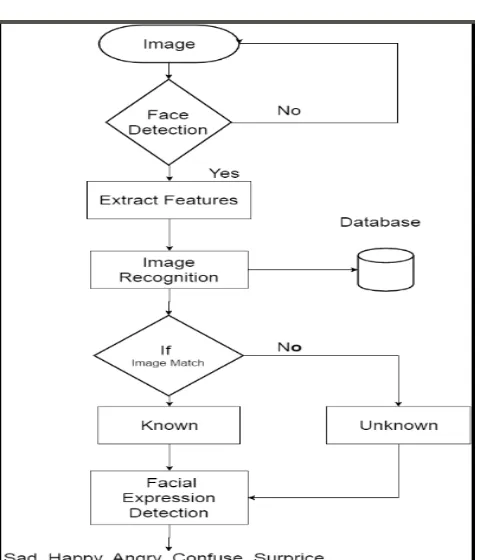© 2017, IRJET | Impact Factor value: 5.181 | ISO 9001:2008 Certified Journal | Page 1
FACE AND FACIAL EXPRESSIONS RECOGNITION
FOR BLIND PEOPLE
Bhupendra Vishwakarma
1, Pooja Dange
2, Abhijeet Chavan
3, Akshay Chavan
4,
Prof. Hema Galiyal
5Student of B.E.COMPUTER, Padmabhushan Vasantdada Patil Pratishthan's College of Engineering, Sion, Mumbai-400 022[1],[2],[3]&[4].
Professor, Padmabhushan Vasantdada Patil Pratishthan's College of Engineering, Sion, Mumbai-400 022[5].
---***---Abstract -
Human face detection and recognition play important roles in many applications such as video surveillance and face image database management. In our project, we have worked on both face recognition and detection techniques. The user wears camera glasses, and system speaks the saved person's name when his face comes in view of the camera. In face recognition,various algorithm used are Viola Jones for face detection,PCA (principal component analysis) in which we recognize an unknown test image by comparing it with the known training images stored in the database as well as give information regarding the person recognized. These techniques works well under robust conditions like complex background, different face positions. This technique works well for Indian faces which have a specific complexion varying under certain range. We have taken real life examples and simulated the algorithms in MATLAB successfully.Key Words: Haar Features, Eigenfaces, PCA, Yale database, Ada Boost etc.
1.INTRODUCTION
It is estimated that 285 million people globally are visually impaired with 39 million blind and 246 million with low vision [1]. Approximately 90% of these people live in developing countries and 82% of blind people are aged 50 and above. In Maryland alone, the site of this study, there are over 100,000 individuals who are legally blind or experience total blindness [2].
An individual is identified by his/her face. Face being the most important part, used for distinguishing a person from another. Each face has different features and have different characteristics of its own. So, face recognition plays a vital role in human behavior. In particular, facial expressions play a major role in the human to human communications and provides very strong cue in measuring levels of interest of a person while interacting with a machine.
IF both these systems used for the blind can do a lot of help to the blind,so this is what we propose in this new idea and a beginning for the disabled ones.
In this project, the blind will be himself able to identify people due to face recognition and will get a audio message about the person, “This is so and so person” and the blind can be himself able to speak to them without having to wait for person from opposite to come to him and speak to him, just he has to identify the person(provided the person details saved in system database) .The new faces can also be added to the database.
© 2017, IRJET | Impact Factor value: 5.181 | ISO 9001:2008 Certified Journal | Page 1621
[image:2.595.87.261.106.344.2]
Figure 1.1 Flowchart for Face recognition
2. LITERATURE SURVEY
Methodology for face recognition based on information theory approach of coding and decoding the face image is discussed in [Sarala A. Dabhade & Mrunal S. Bewoor, 2012 [3]. Proposed methodology is connection of two stages – Face detection using Haar Based Cascade classifier and recognition using Principle Component analysis. Various face detection and recognition methods have been evaluated [Faizan Ahmad et al., 2013] [4] and also solution for image detection and recognition is proposed as an initial step for video surveillance. Implementation of face recognition using principal component analysis using 4 distance classifiers is proposed in [Hussein Rady, 2011] [5]. A system that uses different distance measures for each image will perform better than a system that only uses one. The experiment show that PCA gave better results with Euclidian distance classifier and the squared Euclidian distance classifier than the City Block distance classifier, which gives better results than the squared Chebyshev distance classifier. A structural face construction and detection system is presented in [Sankarakumar et al., 2013] [6-7].
The HUMAN FACE DETECTION AND RECOGNITION is our first paper referred. This paper represents face recognition algorithm such as PCA (principal component analysis), MPCA (Multi linear Principal Component Analysis) and LDA(Linear Discriminant Analysis) in which we recognize an unknown test image by comparing it with the known training images stored in the database as well as give information regarding the person recognized. These techniques works well under robust conditions like complex background, different face positions. These algorithms give different rates of accuracy under different conditions as experimentally observed.
© 2017, IRJET | Impact Factor value: 5.181 | ISO 9001:2008 Certified Journal | Page 1622 The Two-Dimensional PCA: A New Approach to Appearance-Based Face Representation and Recognitionis one more interest of research done[9]. In this paper, a new technique coined two-dimensional principal component analysis (2DPCA) is developed for image representation. PCA has been widely investigated and has become one of the most successful approaches in face recognition [10-13]. As opposed to PCA, 2DPCA is based on 2D image matrices rather than 1D vectors so the image matrix does not need to be transformed into a vector prior to feature extraction. Instead, an image covariance matrix is constructed directly using the original image matrices, and its eigenvectors are derived for image feature extraction. To test 2DPCA and evaluate its performance, a series of experiments were performed on three face image databases: ORL, AR, and Yale face databases. The recognition rate across all trials was higher using 2DPCA than PCA. The experimental results also indicated that the extraction of image features is computationally more efficient using 2DPCA than PCA [9]. The next paper Robust Real-Time Face Detection is used for face detection. Our face detection procedure classifies images based on the value of simple features. There are many motivations for using features rather than the pixels directly. The most common reason is that features can act to encode ad-hoc domain knowledge that is difficult to learn using a finite quantity of training data. For this system there is also a second critical motivation for features:the feature-based system operates much faster than a pixel-based system [14].
One more paper done is FACIAL AND EXPRESSION RECOGNITION FOR THE BLIND USING COMPUTER VISION. Human communication can be divided into two parts: verbal and nonverbal. Over 80% of all communication is carried out through these nonverbal messages [15]. In this,various algorithms were proposed. OpenCV and PCA were one of the methodologies proposed. Then they tried up using 'Local Binary Patterns',it divides the face into small regions, and then calculates a local binary pattern histogram for that region. Finally,the idea of FaceSDK came to the developers of the project. It was robust to illumination changes, seemed to work in real time, and correctly identified people at various poses [16].
3. SYSTEM Raspberry pie 3:
[image:3.595.39.270.558.710.2]The Raspberry Pi is a series of small single-board computers developed in the United Kingdom by the Raspberry Pi Foundation to promote the teaching of basic computer science in schools and in developing countries. The original model became far more popular than anticipated,selling outside of its target market for uses such as robotics.
© 2017, IRJET | Impact Factor value: 5.181 | ISO 9001:2008 Certified Journal | Page 1623
Matlab :
MATLAB (matrix laboratory) is a multi-paradigm numerical computing environment and fourth-generation programming language. A proprietary programming language developed by MathWorks, MATLAB allows matrix manipulations, plotting of functions and data, implementation of algorithms, creation of user interfaces, and interfacing with programs written in other languages, including C, C++, C#, Java, Fortran and Python.
[image:4.595.172.425.191.385.2]
Figure 3.b. Matlab for face recognition
Yale Database :
The Yale database consists of multiple faces stored in the database. The Yale database is specially used in Face recognition algorithms. It has a lot of importance in biometrics and other face recognition applications. It stores about approx 200 faces in its storage.
4. SYSTEM DESIGN
a) Face Detection using Viola Jones:
The face detection is the initial process in this project. Face detection is done using Viola Jones algorithm to detect a face from a set of training images given.
Main idea of Viola Jones :
1) introduction of a new image representation called the Integral Image
2) simple and efficient classifier which is built using the Ada Boost learning algorithm 3) method for combining classifiers in a “cascade” which allows background regions of the image to be quickly discarded
Viola Jones algorithm operates on 384x288 pixel images, faces are detected at 15 frames per second.
© 2017, IRJET | Impact Factor value: 5.181 | ISO 9001:2008 Certified Journal | Page 1624 Figure 4.a The framework proposed by Paul Viola and Michael Jones.
b) Face Recognition using PCA :
The Face Recognition is a major phase of the project which is done using the PCA(Principal Component Analysis) algorithm. The first method we attempted to use was that of Principal Components Analysis, or PCA [17].
PCA involves a mathematical procedure that transforms a number of possibly correlated variables into a number of uncorrelated variables called principal components, related to the original variables by an orthogonal transformation. This transformation is defined in such a way that
© 2017, IRJET | Impact Factor value: 5.181 | ISO 9001:2008 Certified Journal | Page 1625 Figure 4.b PCA approach[6].
© 2017, IRJET | Impact Factor value: 5.181 | ISO 9001:2008 Certified Journal | Page 1626
[image:7.595.40.280.134.414.2]The System:
Figure 4.c proposed system
General idea:
[image:7.595.172.428.500.675.2]© 2017, IRJET | Impact Factor value: 5.181 | ISO 9001:2008 Certified Journal | Page 1627
5. CONCLUSIONS :
In general,we have tried implementing the idea of bringing the vision level of the blind very close to the normal ones. The project proposes a device which enhances participation of the visually impaired by enabling them to be more effective in social interactions.
REFERENCES
[1] WHO. (2014, August) Visual impairment and blindness. Archived at http://www.webcitation.org/6YfcCRh9L. [Online].
Available: http: //www.who.int/mediacentre/factsheets/fs282/en/
[2] A. F. for the Blind, “Statistical snapshots,” 2011.
[3] Sarala A. Dabhade & Mrunal S. Bewoor (2012), “Real Time Face Detection and Recognition using Haar – based Cascade
Classifier and Principal Component Analysis”,
International Journal of Computer Science and Management Research, Vol. 1, No. 1.
[4] Faizan Ahmad, Aaima Najam & Zeeshan Ahmed (2013), “Image-based Face Detection and Recognition: State of the
Art”, IJCSI International Journal of Computer Science Issues, Vol. 9, Issue. 6, No. 1.
[5] Hussein Rady (2011), “Face Recognition using Principle Component Analysis with Different Distance Classifiers”,
IJCSNS International Journal of Computer Science and Network Security, Vol. 11, No. 10, Pp. 134–144.
[6] S. Sankarakumar, Dr.A. Kumaravel & Dr.S.R. Suresh (2013), “Face Detection through Fuzzy Grammar”, International
Journal of Advanced Research in Computer Science and Software Engineering, Vol. 3, No. 2.
[7] Mr. Sarang C. Zamwar, Dr. S. A. Ladhake, Mr. U. S. Ghate, “Human Face Detection and Tracking for Age Rank, Weight
and Gender Estimation based on Face Images utilizing Raspberry Pi Processor”.
[8] K Krishan Kumar Subudhi And Ramshankar Mishra “Human Face Detection And Recognition”.
[9] Jian Yang, David Zhang, Senior Member, IEEE, Alejandro F. Frangi, and Jing-yu Yang K. Elissa “Two-Dimensional PCA: A
New Approach to Appearance-Based Face Representation and Recognition” .
[10] A. Pentland, “Looking at People: Sensing for Ubiquitous and Wearable Computing,” IEEE Trans. Pattern Analysis and
Machine Intelligence, vol. 22, no. 1, pp. 107-119, Jan. 2000.
[11] M.A. Grudin, “On Internal Representations in Face Recognition Systems,” Pattern Recognition, vol. 33, no. 7, pp.
1161-1177, 2000.
[12] G.W. Cottrell and M.K. Fleming, “Face Recognition Using Unsupervised Feature Extraction,” Proc. Int’l Neural Network
Conf., pp. 322-325, 1990.
[13] D. Valentin, H. Abdi, A.J. O’Toole, and G.W. Cottrell, “Connectionist Models of Face Processing: a Survey,” Pattern
Recognition, vol. 27, no. 9, pp. 1209-1230, 1994.
[14] P. Viola, M. J. Jones, “Robust Real-Time Face Detection”, International Journal of Computer Vision 57(2), 137–154,
2004.
[15] M. Argyle, V. Salter, H. Nicholson, M. Williams, and P. Burgess, “The communication of inferior and superior attitudes
by verbal and non-verbal signals,” British journal of social and clinical psychology, no. 9, pp. 222–231, 1970.
[16] Douglas Astler, Harrison Chau, Kailin Hsu, Alvin Hua, Andrew Kannan, Lydia Lei, Melissa Nathanson, Esmaeel Paryavi,
Michelle Rosen, Hayato Unno, Carol Wang, Khadija Zaidi, and Xuemin Zhang. “FACIAL AND EXPRESSION RECOGNITION FOR THE BLIND USING COMPUTER VISION ”.
[17] M. Turk and A. Pent land, “Face recognition using eigenfaces,” in Computer Vision and Pattern Recognition, 1991.
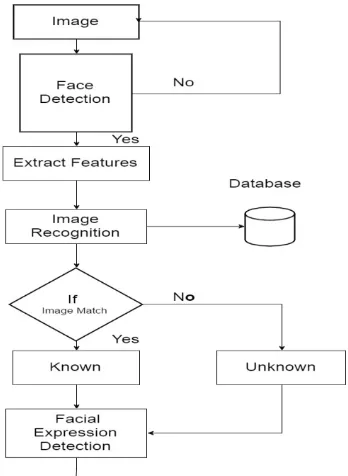
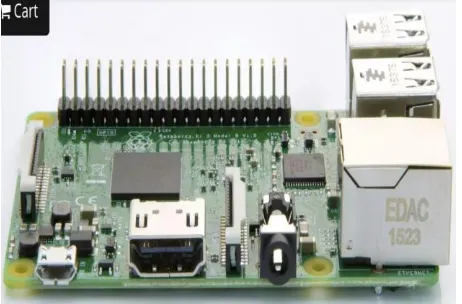
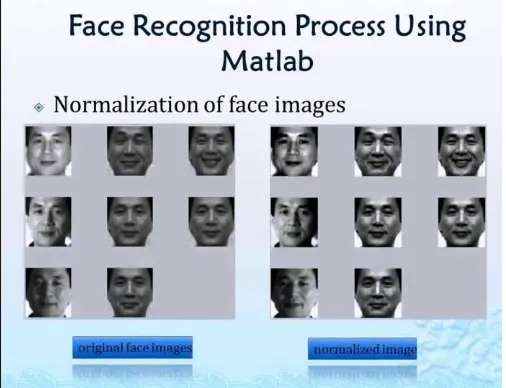
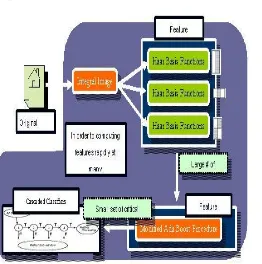
![Figure 4.b PCA approach[6].](https://thumb-us.123doks.com/thumbv2/123dok_us/8177233.809677/6.595.175.456.65.644/figure-b-pca-approach.webp)
